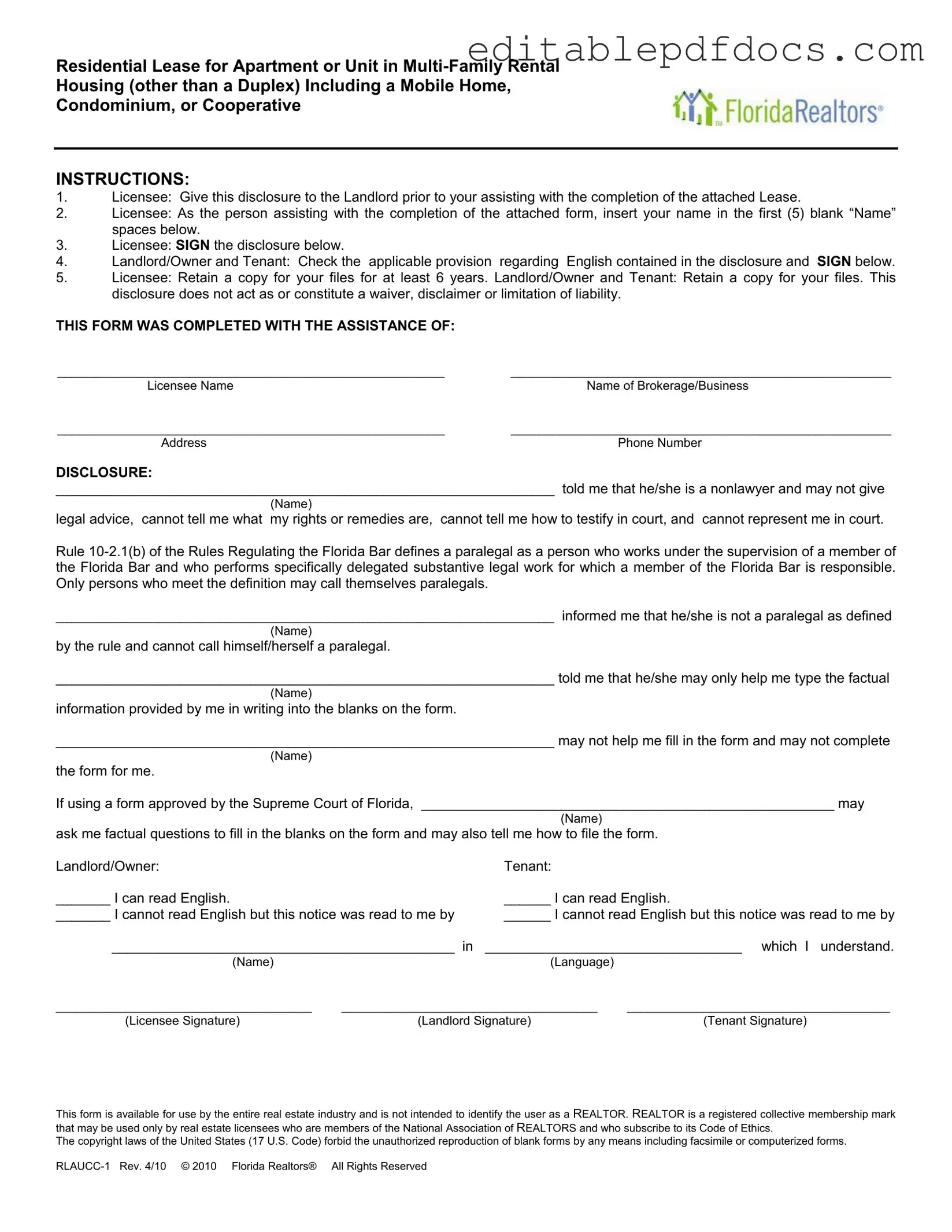Filling out the Florida Realtors Residential Lease form can be a straightforward process, but several common mistakes can lead to confusion or legal issues later on. One frequent error is failing to accurately complete the terms and parties section. This section requires clear identification of both the landlord and tenant, including their names and contact information. Omitting any details or providing incorrect information can complicate future communications and responsibilities.
Another mistake is neglecting to specify the rental payment terms. It's crucial to clearly indicate the amount of rent, the payment schedule, and any additional charges, such as taxes or late fees. If these details are left blank or vague, misunderstandings may arise regarding payment expectations, leading to potential disputes.
People often overlook the importance of the security deposit and advance rent sections. Not specifying the amounts or failing to check the appropriate boxes can create confusion about what is required upfront. This oversight can lead to disagreements about financial obligations before the lease even begins.
Another common error is not understanding the maintenance responsibilities outlined in the lease. Both landlords and tenants should carefully review who is responsible for various maintenance tasks. Leaving these sections incomplete can lead to disputes about who is accountable for repairs, which can escalate into larger issues during the lease term.
Additionally, many individuals fail to acknowledge the notices section properly. It is essential to specify how notices will be delivered and to whom. If this section is not filled out correctly, it could result in missed communications, which might affect the rights and obligations of both parties.
Moreover, the use of premises clause is often misunderstood. Tenants should ensure they understand the restrictions on how they can use the property. If the lease is not clear on this point, tenants might inadvertently violate terms, leading to potential eviction or legal action.
Lastly, many individuals neglect to read the entire lease carefully before signing. This oversight can lead to unexpected obligations or restrictions that could have been avoided. Each section of the lease contains important legal obligations, and understanding these terms is vital for both parties to avoid future conflicts.
